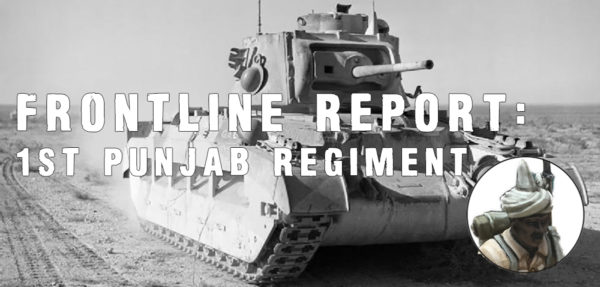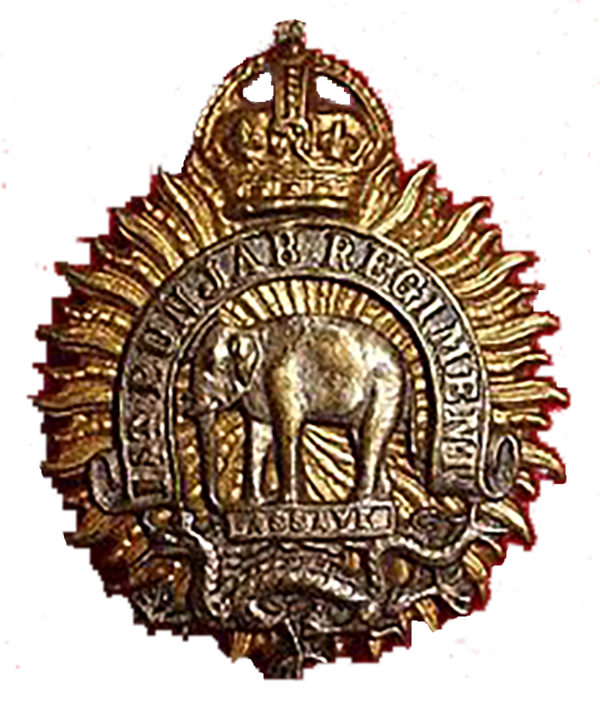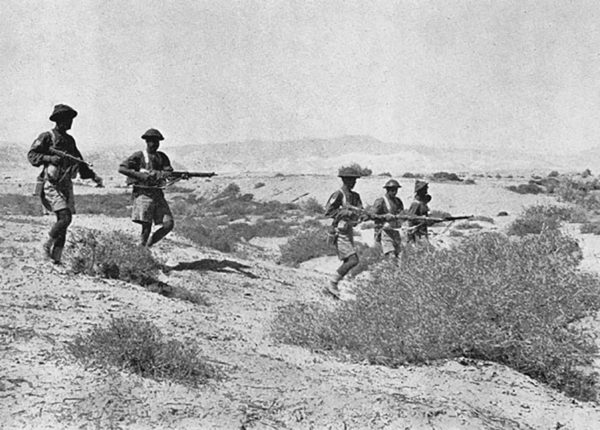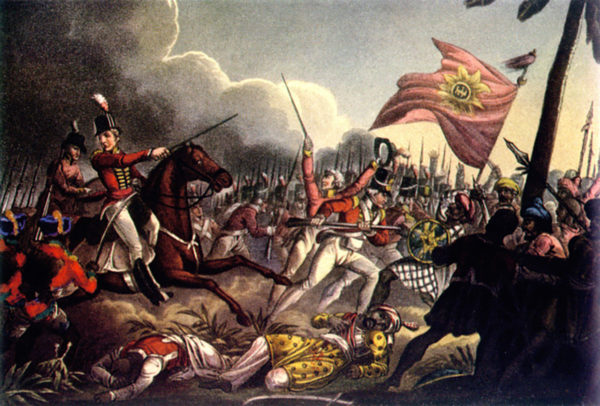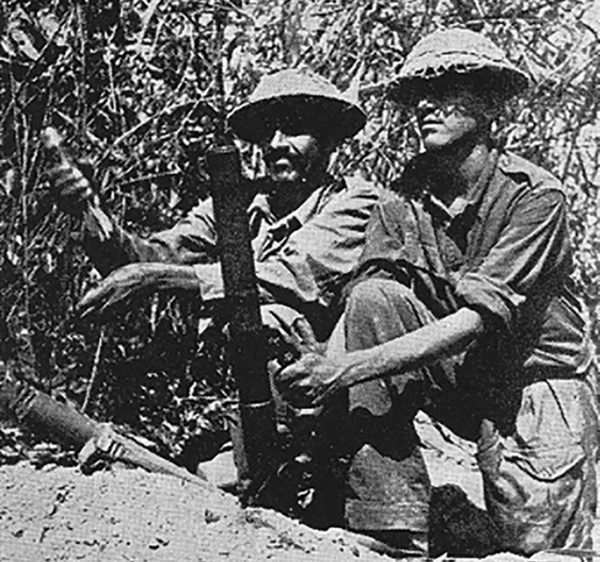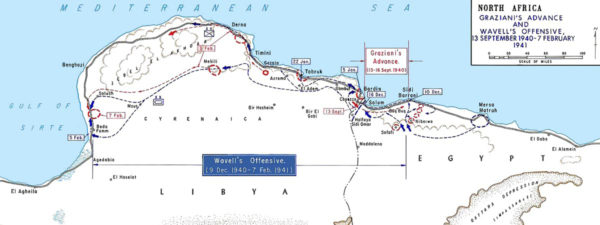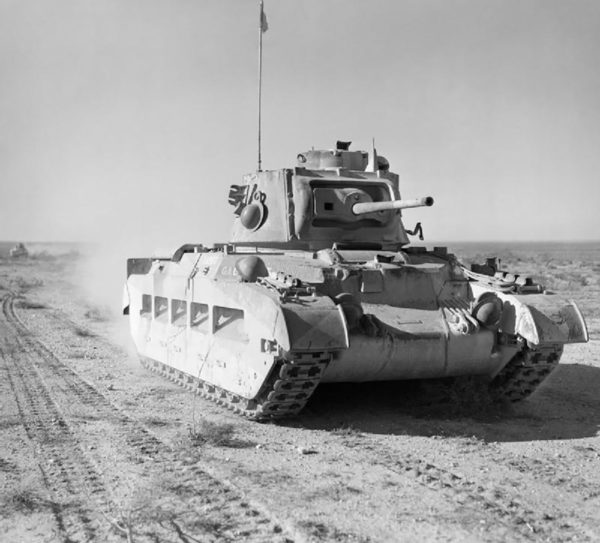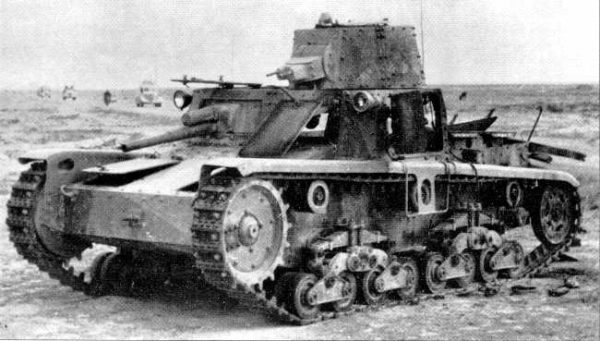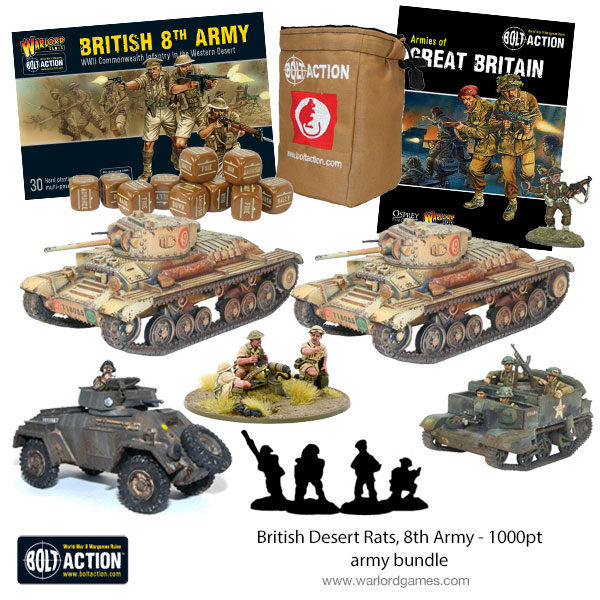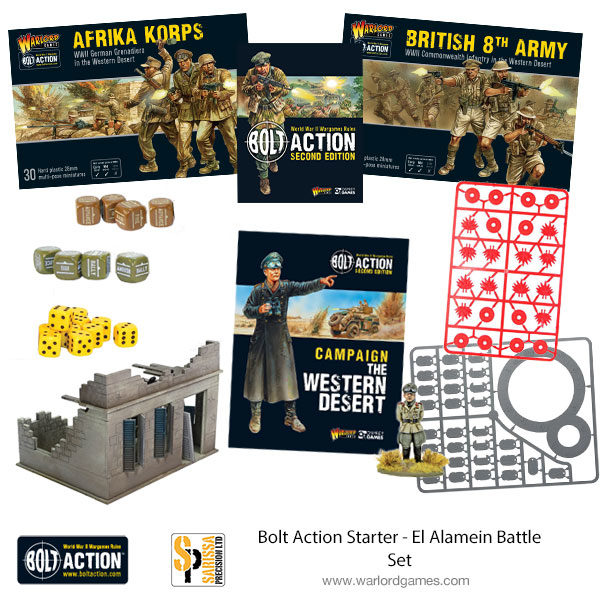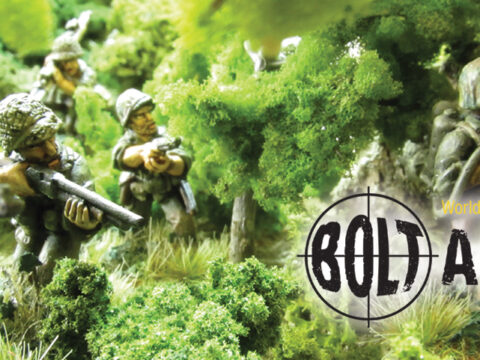In preparation for the release of the new Western Desert campaign supplement, we’ve been looking at some of the unique regiments you can build with our new 8th Army plastic kit. First up is the illustrious 1st Punjab Regiment.
Unit History
The 1st Punjab Regiment was one of the most senior regiments in the British Indian Army, able to trace its history back to the days of the East Indian Company and all manner of colonial squabbles across the sub-continent.
With distinguished service under the future Duke of Wellington at Assaye and battle honours gained in China, the regiment went on to fight in the Mesopotamian Campaign during the first world war.
After reorganization in 1922, the regiment consisted of 5 battalions, a figure which would grow to 13 by the end of the second world war. Over the course of the war, they would take 5510 casualties and the 2nd battalion would become the most decorated unit of the Indian Army.
The regiment would serve with distinction in North Africa, Italy and Burma, where a member of the 2nd battalion would earn a Victoria Cross during the action around Kennedy Peak.
If you’re looking for a characterful and unique force for games of Bolt Action, consider choosing the 1st Punjab. They’re the perfect opponent for Afrika Korps and Italian armies in the deserts of northern and eastern Africa, or Japanese forces in Burma.
Key Battle: Attack on Nibeiwa
Our narrative follows the 1st and 3rd Battalions, part of the 5th Indian Infantry Brigade who fought under Major-General Richard O’Connor as part of the Western Desert Force.
On 9th September 1940, the Italian Army under Marshal Rodolfo Graziani invaded Egypt with 215,000 men against the British Army’s underequipped 36,000. Driving the Commonwealth forces back along the coast road to capture the port of Sidi Barrani, the Italians set about establishing a series of fortified camps and amassing supplies for a continuation of the attack in the winter.
Nibeiwa was one of the southern-most camps in a chain stretching from Maktila on the coast to Sofafi in the south-west. An attack of Nibeiwa would allow the British to break through the Italian lines and cut off any retreat from Sidi Barrani.
In preparation for the attack, the Commonwealth amassed 5000 men of the 11th Indian Infantry Brigade and 47 tanks of the 7th Royal Tank Regiment, including the formidable Matilda II infantry tanks, whose armour was impervious to all Italian anti-tank and artillery guns.
The Italian forces consisted of the Maletti Group, composed of seven battalions of Libyan infantry, a company of new M11/39 tanks and some L3/33 tankettes. This force had the dubious distinction of being the main motorized unit of the Italian 10th Army and the first combined arms unit in North Africa.
The Battle
On the morning of December 10th, aided by low-flying aircraft to disguise the noise of gunning engines and diversionary artillery barrages, the men of the 11th Indian Infantry Brigade attacked in close cooperation with the Matilda tanks, using trucks and Universal Carriers to quickly reposition in the face of Italian opposition.
Caught with their engines still cold, the Italian tanks were knocked out before the battle had even begun, and British infantry quickly overran the fortified camp.
Despite a heroic defence, with individual groups stalking British tanks with hand grenades and artillery crews firing their pieces over open sights at point blank range, the Italian and Libyan forces were eventually overwhelmed.
819 Italian soldiers were killed, with a further 1338 wounded and 2000 taken prisoner. The British and Indian casualties were minor by comparison, with a total of 56 killed.
This would set the tone for the remainder of Operation Compass. By the time Sidi Barrani fell on December 11th, the Western Desert Force had taken 38,300 Italian prisoners and captured 73 tanks and 422 guns. By comparison, Commonwealth losses amounted to 133 men killed and 387 wounded.
You can find rules for re-fighting the attack on Fort Nibeiwa in the new Campaign: The Western Desert book, available for pre-order now!
Using the 1st Punjab Regiment in Bolt Action
Whether you choose to fight against the Italians in the Western Desert or follow the regiment’s career further into East Africa, Italy or Burma, these well-disciplined veterans will serve you well. I have chosen to represent a platoon as it would have been at Nibeiwa.
I used the 1940-1942 Commonwealth Infantry Brigade force selector from the new Western Desert book to put this army together. All together I’m pretty happy with how it looks. It has plenty of manoeuvrability and anti-infantry firepower from the infantry and Bren carriers, with the heavy hitting done by the slow but exceptionally tough Matilda II tanks.
| Unit Type: | Unit Name: | Upgrades: | Total Cost: |
| Headquarters | First Lieutenant (Regular) | 2 additional men (Regular) | 95pts |
| Infantry | Infantry Section (Regular) | Light machine gun | 70pts |
| Infantry | Infantry Section (Regular) | Light machine gun | 70pts |
| Infantry | Infantry Section (Regular) | Light machine gun | 70pts |
| Infantry | Infantry Section (Regular) | Light machine gun | 70pts |
| Infantry | Machine gun team (Regular) | N/A | 65pts |
| Infantry | Light mortar team (Regular) | N/A | 35pts |
| Tank | Matilda II (Regular) | N/A | 155pts |
| Tank | Matilda II (Regular) | N/A | 155pts |
| Transport | Bren Carrier (Regular) | N/A | 60pts |
| Transport | Bren Carrier (Regular) | N/A | 60pts |
| Transport | Bren Carrier (Regular) | N/A | 60pts |
| Transport | Bren Carrier (Regular) | N/A | 60pts |
| Transport | 15cwt Truck (Regular) | N/A | 31pts |
| Total Points Cost: | 1056pts |
Battle Honours
Abyssinia 1940–41, Damascus, Syria 1941, Sidi Barrani, Omars, Benghazi, Gazala, Defence of Alamein Line, El Alamein, North Africa 1940–43, Arezzo, Advance to Florence, Gothic Line, The Senio, Italy 1943–45, Pyuntaza-Shwegyin, Yenengyaung 1942, Monywa 1942, Donbaik, Htizwe, North Arakan, Buthidaung, Razabil, Mayu Tunnels, Maungdaw, Ngakyedauk Pass, Imphal, Tamu Road, Litan, Kanglatongbi, Kohima, Defence of Kohima, Relief of Kohima, Jail Hill, Ukhrul, Kennedy Peak, Kalewa, Meiktila, Defence of Meiktila, Taungtha, The Irrawaddy, Rangoon Road, Pyawbwe, Shwemyo Bluff, Pyinmana, Toungoo, Pegu 1945, Sittang 1945, Ramree, Burma 1942–45
Next Time
The next regiment we’ll be taking a look at is the 6th Rajputana Rifles and their exploits in East Africa.
If you’ve been inspired to recreate the 1st Punjab Regiment, you can find all the bits you need in our webstore!

